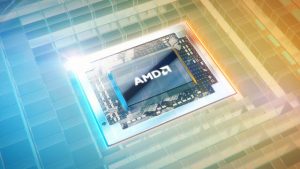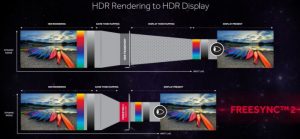





Hence, AMD’s GPU drivers are (more) able to reduce lag, and cut any extra processing, which makes modern games more fun, as they utilize HDR technology better than before. This also means an advantage to the SRGB color gamut. See, FreeSync 2 allows for mode switching, where Windows usually takes dimmer views of color space overwriting. In theory, once inside any application that utilizes HDR, AMD will jump right into a higher color quality than standard, giving you smoother than ever gaming.
The other convenience identified with FreeSync 2 is AMD’s utmost efforts in discipline when it comes to tightening standards in refresh rates. Current stats show FreeSync 2 offering 2 times the lowest, or a 30Hz display expelling that of 60Hz, in the very least (they say the ideal range is 24Hz to 60Hz). Luckily, when this is the case in gaming, we see games offering what is referred to as Low Framerate Compensation (LFC). In this scenario, games send frames twice as fast and performance is smooth as it can be.
Stutters no more! Smoothed and improved performance is what it’s all about with AMD’s FreeSync technology. However, interestingly enough, game “awareness” of this generation requires support from game developers and engine creators. That’s new, but at least we do know AMD and monitor developing companies are all the way in, designing displays “that would be able to deactivate their own tone mapping to let the GPU take over”. All-in-all, the point is that AMD is working to connect the game engine directly to the HDR display, and although we don’t have a date of a specific market release, it’s being suggested that the market will hear from AMD’s second generation of FreeSync in the first half of the year.

 Laptop & Tablet Parts
Laptop & Tablet Parts





